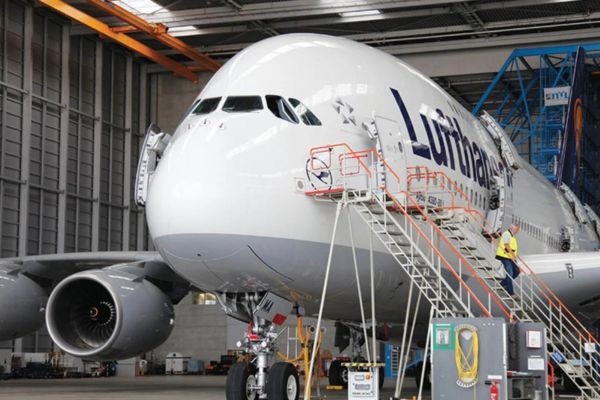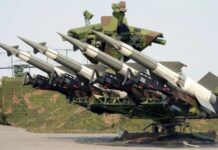The global wide body aircraft MRO market size is estimated at USD 27.21 billion in 2025 and is anticipated to reach around USD 39.07 billion by 2034, growing at a CAGR of 4.10% from 2025 to 2034. The North America market size was valued at USD 10.46 billion in 2024 and is expanding at a CAGR of 4.22% during the forecast period. This growth is being fueled by a confluence of factors. Most notably, the resurgence in international travel has led to a renewed emphasis on long-haul routes where wide-body aircraft such as the Boeing 777, Airbus A330, and the newer Boeing 787 and Airbus A350 dominate. Airlines are increasingly opting to extend the lifecycle of these aircraft due to delays in new aircraft deliveries caused by global supply chain issues. As a result, the focus on meticulous maintenance and efficient turnaround times has never been more intense.
As the aviation industry rebounds from the turbulence of the pandemic years, the spotlight has firmly shifted toward the backbone of aircraft operations: Maintenance, Repair, and Overhaul (MRO). Among the most critical and resource-intensive segments is the Wide-Body Aircraft MRO market, a vital support structure for long-haul aviation. These aircraft—characterized by their dual-aisle configuration, larger payload capacity, and extended range—are indispensable for global connectivity. With fleets aging, demand escalating, and technology evolving, the wide-body MRO sector is undergoing a period of dynamic transformation.
Complexity at Scale: The Nature of Wide-Body MRO
Wide-body aircraft inherently present complex maintenance challenges due to their size, structural intricacies, and technological sophistication. The MRO process for such aircraft encompasses several service segments: airframe maintenance, engine overhaul, line and base maintenance, component repair, and cabin retrofits. Among these, engine overhaul remains the most capital-intensive and frequently required service. This is especially true for modern turbofan engines, which feature advanced materials and require deep technical expertise to service properly.
Labor and Compliance: Industry-Wide Challenges
The labor-intensive nature of wide-body MRO work has been further stressed by a shortage of skilled technicians across the globe. Many senior engineers exited the workforce during the COVID crisis, and new entrants have been slow to meet rising demand. Moreover, increasing regulatory stringency from authorities like the FAA (Federal Aviation Administration), EASA (European Union Aviation Safety Agency), and ICAO adds another layer of complexity for service providers operating in multiple jurisdictions. Consequently, MRO organizations are now compelled to invest in continuous workforce training and regulatory compliance infrastructure.
Digital Shift: The Age of Predictive Maintenance
One of the most compelling developments in the industry is the rise of digitalization. Airlines and MRO service providers are rapidly integrating predictive maintenance platforms powered by artificial intelligence (AI), machine learning (ML), and real-time sensor analytics. These systems monitor aircraft health during operations and flag potential faults before they escalate into failures, enabling more precise and cost-effective maintenance scheduling. In parallel, technologies such as drone-assisted inspections, digital twins, augmented reality (AR) for training, and blockchain for traceability are transforming the maintenance landscape.
Predictive Analytics and Big Data Integration
Modern aircraft are equipped with thousands of sensors, continuously collecting data on engine performance, airframe stress, temperature, vibration, and fuel efficiency. Leveraging big data and predictive analytics, MRO teams can now anticipate failures before they occur, optimize maintenance intervals, and significantly reduce aircraft-on-ground (AOG) time. This shift toward data-driven decision-making not only cuts operational costs but also enhances safety by preventing unexpected breakdowns. OEMs and tech companies alike are offering integrated platforms—such as Boeing’s AnalytX and Airbus’s Skywise—that provide real-time, actionable insights for airlines and maintenance firms.
Robotics and Automation in MRO Hangars
Automation is revolutionizing MRO facilities. Robotic arms are now used for tasks such as sanding, painting, and surface inspections—previously performed manually and prone to human error. Automated guided vehicles (AGVs) assist in transporting parts and tools across large hangars, improving workflow efficiency. Additionally, autonomous drones are employed to inspect aircraft exteriors, rapidly detecting micro-cracks, corrosion, or paint defects. These technologies reduce downtime, enhance accuracy, and improve worker safety by minimizing the need for scaffolding and manual climbs during inspections.
Regional Perspectives: Global Demand, Local Strategies
From a regional perspective, North America continues to dominate the wide-body MRO space due to its mature airline network and large fleet size. However, Asia Pacific is emerging as the fastest-growing market, with countries like China, India, and Vietnam experiencing a surge in fleet expansion. In response, governments and private entities in the region are investing in domestic MRO infrastructure to reduce dependency on Western service providers. Meanwhile, the Middle East, home to leading carriers like Emirates and Qatar Airways, is reinforcing its strategic role as a global MRO hub through heavy investments in hangar expansions and specialized service centers.
Strategic Mergers and Acquisitions
Consolidation is reshaping the competitive landscape of the MRO sector. Leading companies are acquiring regional providers and niche specialists to expand their capabilities and global footprint. For example, OEMs are increasingly forming alliances with third-party MROs to offer integrated services, reduce costs, and improve turnaround times. These mergers are not just about capacity—they also grant access to proprietary repair technologies, certifications, and client networks. Strategic acquisitions are becoming a key lever for entering new markets and countering competition from low-cost providers.
Geopolitical and Economic Risks
Geopolitical tensions, trade restrictions, and fluctuating currencies present considerable risks to MRO operations. Export controls on aerospace components, such as those imposed in regions affected by war or political instability, can disrupt the global parts supply chain. Sanctions and diplomatic strains between nations may restrict the movement of critical technology or parts across borders. Additionally, rising inflation and interest rates are pushing up costs for equipment, labor, and insurance—forcing MRO providers to rethink pricing models and procurement strategies. Companies with diversified supply chains and regional operations are better positioned to mitigate these risks.
Competitive Landscape: The Battle for Technical Leadership
The competitive landscape is equally dynamic. Industry giants such as Lufthansa Technik, GE Aviation, Rolls-Royce, Honeywell Aerospace, and Pratt & Whitney continue to lead the charge through strategic collaborations and technical innovations. At the same time, regional players and third-party MRO companies are scaling up operations to tap into growing demand from commercial airlines, military operators, cargo carriers, and leasing firms. Increasingly, these companies are adopting green MRO practices, including sustainable hangar design, eco-friendly waste disposal, and energy-efficient processes to align with broader environmental goals.
Wide Body Aircraft MRO Market Ecosystem
- Air France Industries KLM Engineering & Maintenance
- Airbus
- Boeing
- General Electric
- Honeywell
- Lockheed Martin
- Lufthansa Technik
- MRO Holdings
- MTU Aero Engines
- Northrop Grumman
- Pratt and Whitney
- Safran
- ST Aerospace
- Textron
Source: https://www.precedenceresearch.com/wide-body-aircraft-mro-market
















